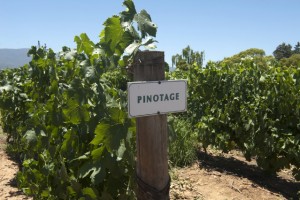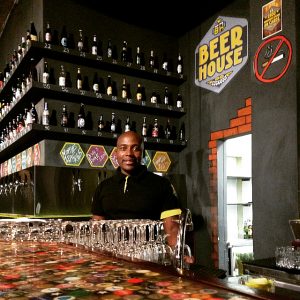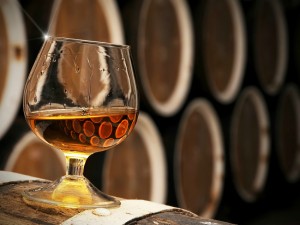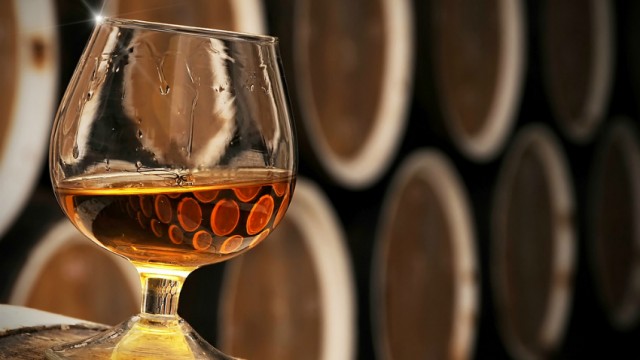Eating your way around the globe is an acceptable reason for planning a travel itinerary, so why shouldn’t the same be true for drinking? When taken in moderation, booze can be as much of a cultural encounter as music, art or street eats. It often comes with its own etiquette and it can say a lot about the country or region in which it is found. South Africa loves a party, so why not seek out something from this six-pack of local tipples — you might just learn a little about the local culture while you’re sipping.

Shutterstock
1. Wine
The roots of the South African vine stretch back over 300 years, when the first Dutch settlers arrived on Cape Town’s shores. The earliest vineyards were planted in what is now the suburb of Constantia — still home to a small wine route today. The majority of the Cape wineries though, lie in Stellenbosch, Paarl and Franschhoek, a trio of towns about an hour east of Cape Town. Tour the Winelands on foot, on horseback, by bike, or on a guided tour — or if you’re lucky enough to have a designated driver, design your own route and drive between tastings. Look out for cellar tours, tutored tastings and interesting food pairing experiences — there’s everything from wine with cheese or chocolate, to wine and marshmallows, biltong (a spicier version of beef jerky), nougat or ice cream. For a less crowded wine appreciation experience, try the Darling or Swartland regions to the north or the tasting rooms of the Elgin or Hemel en Aarde valleys further east. Wherever you are, be sure to try some pinotage, South Africa’s home-grown grape.

Photo by Karen Elowitt
2. Beer
Despite wine’s long-running fame and glory, beer is consumed on a far greater scale than its more potent counterpart in South Africa. And in fact, beer’s history goes back a few years further than that of wine, pretty much arriving with the first Dutch settlers in the mid-17th century. The main producer of beer is brewing giant SABMiller, the world’s second largest brewery. Their lagers have been sipped alongside meat from the braai (barbecue) for decades, but in recent years some new faces have appeared in beer fridges alongside the old favorites. Much like in the USA, Australia and parts of Europe, South Africa has undergone a beer revolution in recent years, with microbreweries popping up all over the country. Some offer brewery tours, others run tutored tasting and beer pairings while some are only open for off-sales. For a truly South African experience, seek out unusual brews featuring local ingredients such as rooibos – a plant usually cultivated as a herbal tea – and buchu, a pungent herb once used in traditional medicine.
3. Sorghum beer
So-called “clear beer” predates wine by just a handful of years in South Africa, but sorghum beer goes way back. This low-alcohol brew has been a part of traditional South African life for centuries and continues to be a popular beverage in many parts of the country. Brewed from sorghum malt, maize, water and naturally occurring yeast, umqombothi, as it is known in isiXhosa (one of South Africa’s official languages) bears little resemblance to its fizzy amber friend. Its greyish-pink, opaque appearance, chunky texture and sour taste all combine to make this an acquired taste, but sampling some is an essential part of any trip to South Africa. You can buy a mass-produced version, but for a more memorable tasting experience, head to a township shebeen (bar) or rural village as part of a guided tour. Traditionally, sorghum beer is sipped from a large communal container – sometimes a bucket or sometimes a decorative pot known by the Zulus as ukhamba. The beverage comes with its own manual of dos and don’ts, so make sure you taste with someone in the know on sorghum beer etiquette.

Brandy and aging barrels (Shutterstock)
4. Brandy
Where there is wine, there is brandy and South Africans love the distilled version of the grape as much as they love table wine. A brandy region ideal for travellers is Route 62, a winding and picturesque road that leads through the Breede River Valley and the semi-desert Karoo (a word originating from the Khoisan language and meaning ‘Land of Thirst’). Take a tour of one of the brandy distilleries in Robertson, Barrydale or Oudtshoorn, taking time between tastings for the many other attractions in this region – ostrich riding, rock-climbing, cave exploration or mountain biking. Back in the Winelands, there are brandy cellars galore in Paarl and Stellenbosch, including some places that pair the beverage with chocolate or coffee. Cape Town itself also has a brandy trail, a high-end bar crawl stopping in at some of the Mother City’s most sophisticated watering holes for brandy-based cocktails.
5. Mampoer
It takes a real alcohol enthusiast to appreciate the finer points of mampoer, a powerful spirit distilled from pretty much any kind of fruit (peaches, plums, apricots and all kinds of citrus fruit are most commonly used). Some call it brandy, but the potent beverage doesn’t receive the TLC that a barrel of brandy does. There is no wood-maturing taking place here and blending is very rare, giving pretty much no chance for the alcohol to mellow. Versions vary, but mampoer generally reaches ABV percentages of 50 or 60. This “bush brandy” is distilled on farms and in garages everywhere, but your best chance to taste some is in the small backwater town of Groot Marico in the North West province. Here distillers offer brief tours of their often rudimentary setups, then join you for a tasting of their wares. There are some real characters producing mampoer and chatting to them about life in rural South Africa is as much a part of the experience as forcing down shots of their product. If you’re in the Cape, look out for witblits, the local name for mampoer, most often distilled from grapes — try Prince Albert, Worcester or Plettenberg Bay for witblits distilleries to tour.

Photo courtesy of Amarula.com
6. Amarula
While the marula fruit itself is a favourite snack for African elephants, humans tend to prefer it in its alcoholic form. Amarula is one of the world’s top-selling cream-based liqueurs, usually served over a couple of chunks of ice. The base spirit, distilled from the marula fruit, is aged in oak for two years before being blended with cream. You can sip Amarula on the rocks in pretty much any bar around the country, but for the full marula experience, head to the Amarula Lapa just outside the town of Phalaborwa, on the edge of the Kruger National Park. Here you can get an insight into how the drink is made, sample it neat or in cocktail form and during harvest season (mid-January to mid-March) perhaps taste the fruit itself. The base liquor – known as marula wine – can also be found at this time of year, though it’s a harsh beverage that has little in common with its creamy cousin.



